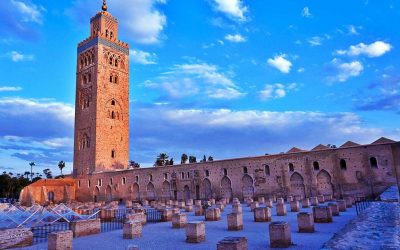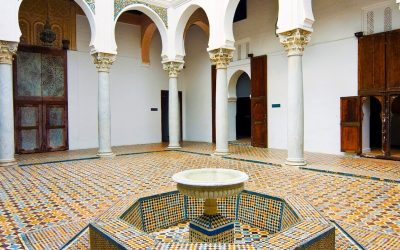A Rich History of Zellige Tilework
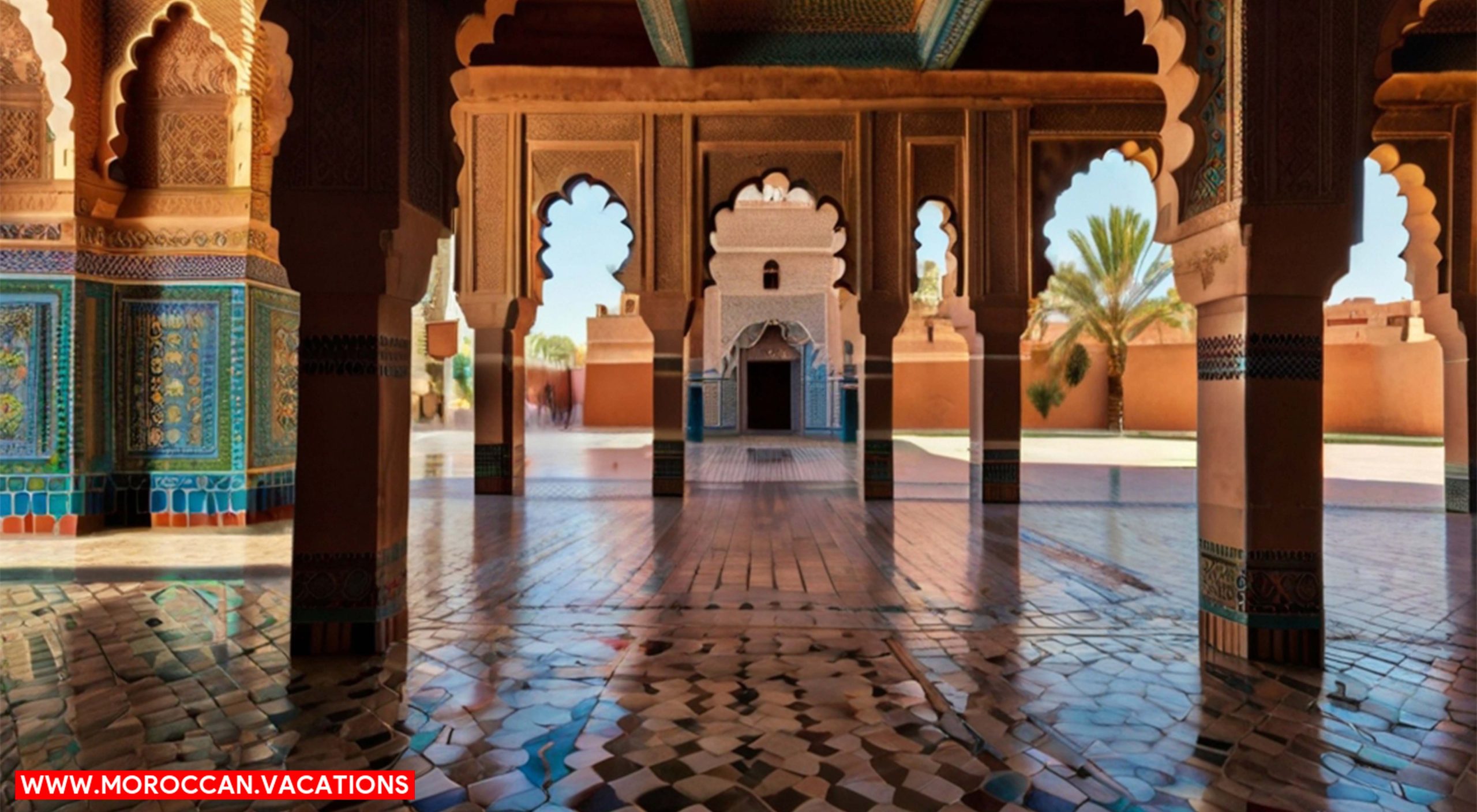

Step into the world of Moroccan architecture and marvel at the splendor of Zellige tilework in Marrakesh. Immerse yourself in the rich history and artistry of this ancient craft as you explore the intricate geometric patterns and vibrant colors that adorn mosques, palaces, and traditional homes. Discover the enduring beauty of Zellige tilework, where tradition meets modernity, and be captivated by the freedom of expression that these tiles bring to the architecture of Marrakesh.
One of the key aspects to understand about Zellige tilework is its extensive and diverse history. The history of zellige tile techniques dates back to the 10th century, with its origins in the Islamic civilization. This ancient art form flourished in the Islamic world, particularly in Morocco, where it reached its pinnacle of beauty and innovation. The intricate patterns and vibrant colors of zellige tiles have captivated the hearts of artists, architects, and enthusiasts for centuries.
The significance of the zellige tile revival in recent years cannot be overstated. As the world becomes more connected, there is a growing interest in preserving cultural heritage and reviving traditional craftsmanship. Zellige tiles, with their rich history and exquisite craftsmanship, have become a symbol of cultural identity and artistic expression.
The revival of zellige tilework has also brought economic benefits to the communities involved in its production. The demand for zellige tiles has created employment opportunities for skilled artisans, helping to sustain traditional craftsmanship and support local economies.
Furthermore, the revival of zellige tilework has contributed to the preservation of architectural heritage. Many historic buildings adorned with zellige tiles have been restored to their former glory, allowing future generations to appreciate the beauty and craftsmanship of this ancient art form.
The Art of Zellige Tile Crafting
Crafting Zellige tiles requires meticulous attention to detail and a mastery of traditional techniques. The art of Zellige tile crafting is a labor-intensive process that has been passed down through generations in Morocco. Skilled craftsmen, known as maâlems, meticulously shape and cut small geometric pieces of clay called tesserae. These tesserae are then assembled into intricate patterns and designs and set in plaster or cement. The techniques used in Zellige tilework have remained largely unchanged for centuries, reflecting the preservation efforts of this ancient craft.
The craftsmanship involved in creating Zellige tiles is characterized by precision and patience. The maâlems carefully shape each tessera, ensuring that the edges are smooth and the dimensions are consistent. The pieces are then arranged in a jigsaw-like manner to form the desired pattern. The final step involves carefully applying the mortar to secure the tesserae in place. The result is a stunning mosaic of colors and shapes that can be seen adorning the walls, floors, and ceilings of Moroccan architecture.
Preservation efforts for Zellige tilework have become increasingly important as modernization threatens the traditional techniques. Organizations such as the Moroccan National Handicrafts Office have been working to safeguard this cultural heritage by providing training programs and promoting the use of Zellige tiles in contemporary design. By preserving and promoting the art of Zellige tile crafting, Moroccan artisans are ensuring that this ancient tradition continues to thrive and captivate future generations.
Exploring the Geometric Patterns
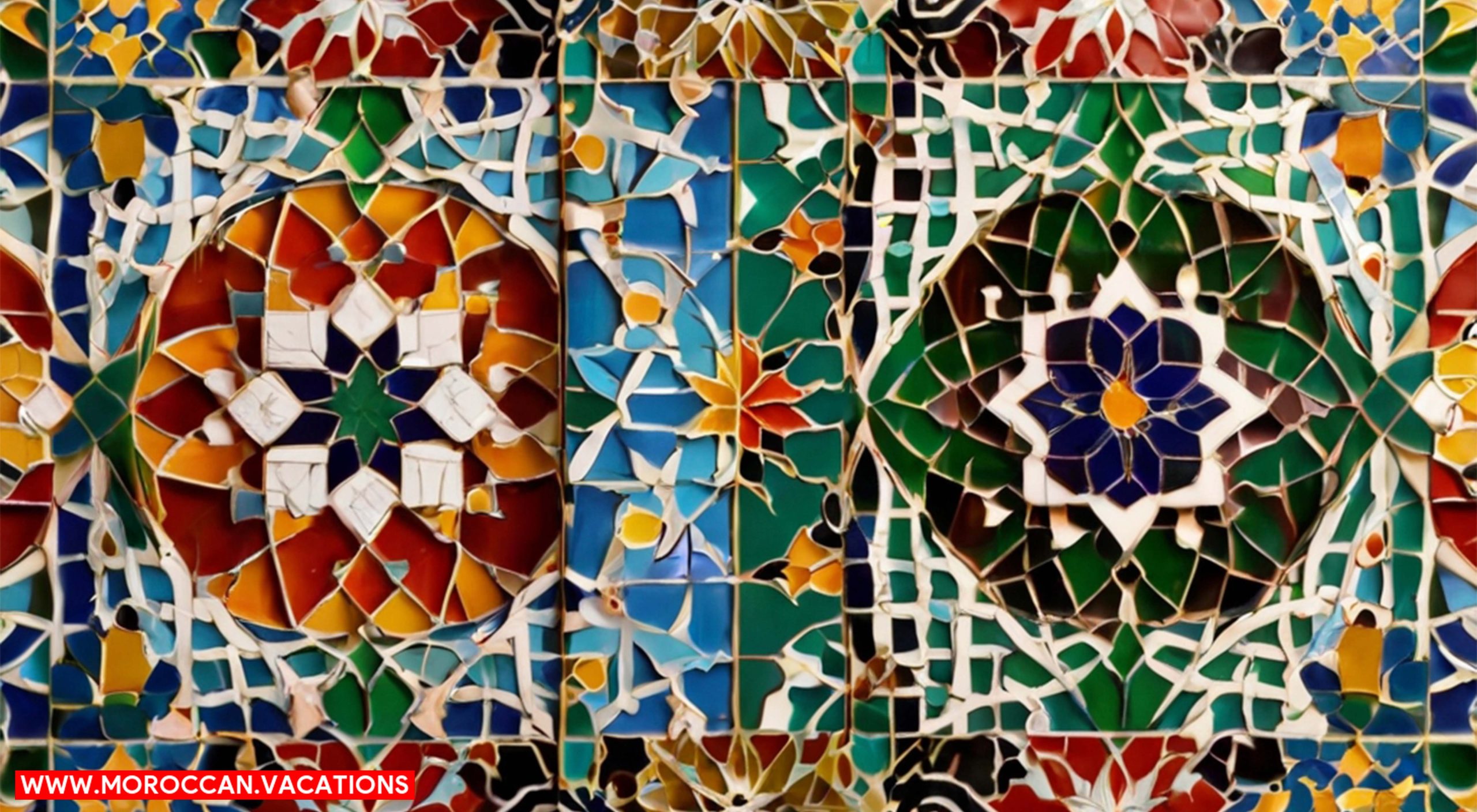

As you explore the intricate world of Moroccan Zellige tilework, you will be mesmerized by the captivating geometric patterns that adorn the walls, floors, and ceilings of Marrakesh’s architecture. These patterns are not merely decorative, but hold deep cultural significance and are a testament to the rich history of Moroccan craftsmanship.
The geometric patterns found in Zellige tilework are a reflection of the Islamic influence on Moroccan art and design. Islamic art traditionally avoids the depiction of living beings, leading to a focus on intricate geometric shapes and patterns. The repetition of geometric motifs creates a sense of harmony and balance, while the interlocking patterns symbolize the interconnectedness of the world.
Exploring the cultural significance of these geometric patterns reveals their spiritual and philosophical undertones. The use of symmetry in the designs is believed to represent the perfection of God’s creation. The complex patterns also serve as a reminder of the infinite nature of the universe, inviting contemplation and reflection.
While Zellige tilework has a long history, contemporary designs have also emerged, blending traditional techniques with modern aesthetics. Today, you can find bold and vibrant geometric patterns alongside more minimalist and abstract designs. This fusion of old and new allows for the preservation of tradition while embracing innovation.
Whether you are admiring the historic palaces or exploring the modern riads of Marrakesh, the geometric patterns of Zellige tilework will continue to captivate and inspire. They are a testament to the enduring beauty and cultural significance of Moroccan craftsmanship.
Vibrant Colors of Zellige Tiles
Immerse yourself in the vibrant colors of Zellige tiles as you continue to explore the mesmerizing world of Moroccan architecture in Marrakesh. These tiles, known for their intricate geometric patterns, are equally renowned for their bold and striking hues. From vibrant reds and blues to rich greens and yellows, the colors of Zellige tiles bring life and energy to the architecture of Marrakesh.
The cultural significance of Zellige tiles lies in their historical roots. Dating back to the 10th century, these tiles have been an integral part of Moroccan art and design. The use of vibrant colors in Zellige tiles reflects the richness and diversity of Moroccan culture, where color plays a significant role in everyday life. The vibrant hues symbolize joy, celebration, and vitality, adding a sense of vibrancy to the architectural landscapes of Marrakesh.
In contemporary times, Zellige tiles continue to be widely used in both traditional and modern architectural designs. Their vibrant colors and intricate patterns make them a popular choice for interior and exterior spaces. Whether it’s a traditional riad or a modern hotel, the vibrant colors of Zellige tiles add a touch of Moroccan elegance and charm. Additionally, these tiles are often used in decorative accents such as tabletops, fountains, and wall hangings, further showcasing their versatility and enduring appeal.
The vibrant colors of Zellige tiles are not only visually stunning but also culturally significant. They reflect the rich heritage of Moroccan art and design while adding a vibrant touch to contemporary architectural spaces. So, embrace the joyous colors of Zellige tiles and let them transport you to the captivating world of Moroccan architecture.
Zellige Tiles in Mosques and Palaces
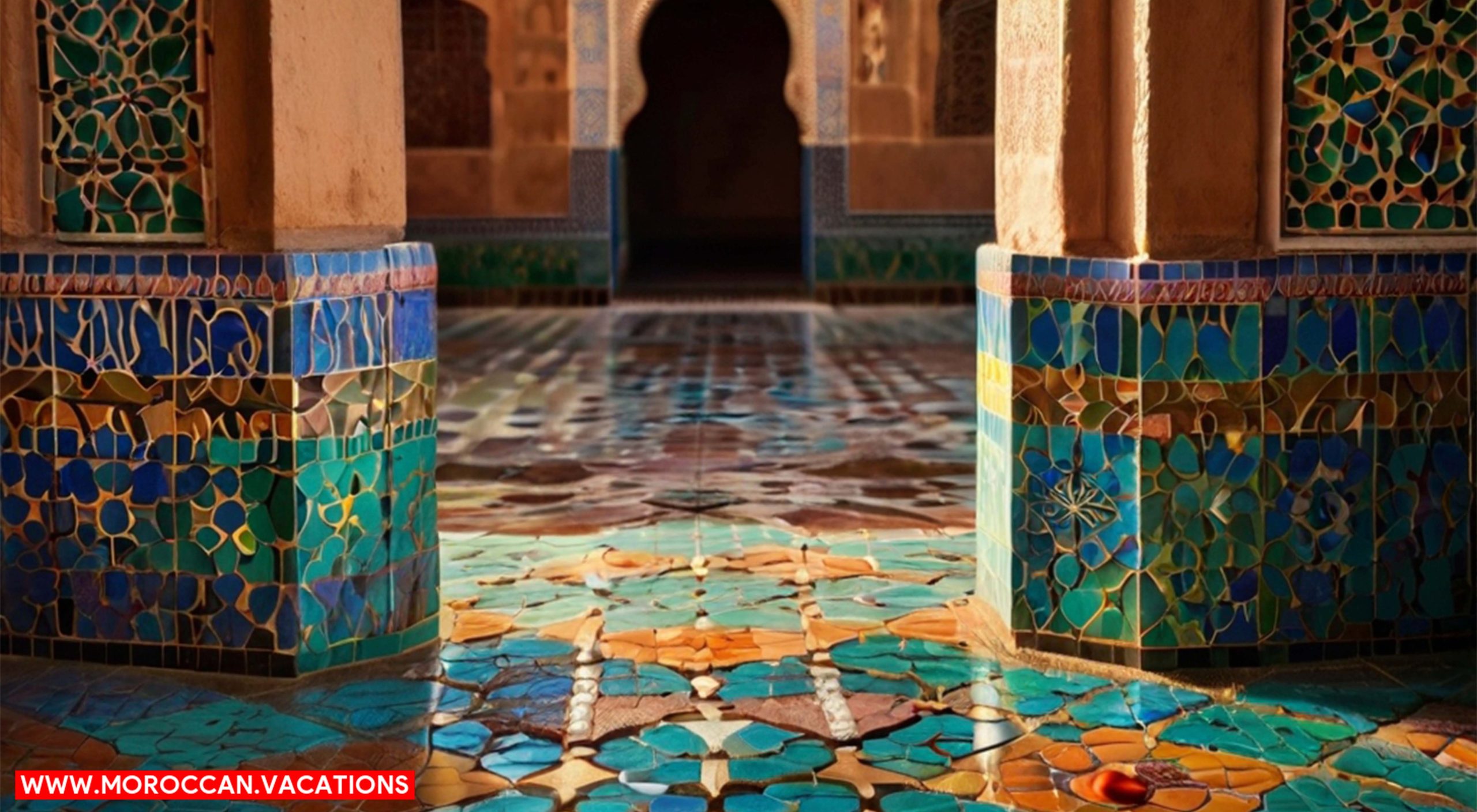

Discover the exquisite beauty of Zellige tiles in the grandeur of Moroccan mosques and palaces. These stunning tiles have become an integral part of the country’s architectural heritage, symbolizing the rich history and culture of Morocco. Zellige tiles in modern architecture continue to captivate the imagination of designers and architects worldwide, as they provide a unique and visually striking element to any building.
In Moroccan mosques, Zellige tiles adorn the walls, domes, and minarets, adding a sense of grandeur and spirituality to these sacred spaces. The intricate geometric patterns and vibrant colors of the tiles create a mesmerizing visual experience, reflecting the creativity and craftsmanship of Moroccan artisans. The use of Zellige tiles in mosques not only enhances the aesthetic appeal but also serves as a reminder of the Islamic art and architectural traditions.
Similarly, Moroccan palaces showcase the beauty of Zellige tiles, transforming these royal residences into architectural masterpieces. The tiles can be found in the courtyards, fountains, and interior spaces of the palaces, adding a touch of opulence and elegance to the surroundings. They serve as a testament to the country’s rich cultural heritage and the skilled artisans who continue to preserve this traditional craft.
The incorporation of Zellige tiles in modern architecture is a testament to their timeless appeal and cultural significance. They not only enhance the visual allure of buildings but also serve as a reminder of Morocco’s artistic legacy. These tiles continue to inspire designers and architects, who strive to incorporate the beauty and craftsmanship of Zellige tiles into contemporary structures, ensuring that this cultural heritage remains alive and celebrated.
Zellige Tiles in Traditional Homes
In traditional homes, Zellige tiles continue to showcase their exquisite beauty and play a significant role in preserving the cultural heritage of Morocco. These intricate mosaic tiles are not only visually stunning but also serve practical purposes in Moroccan households. The zellige tile installation techniques have been passed down through generations, ensuring that the traditional art form is kept alive.
- Handcrafted Precision: Zellige tiles are meticulously crafted by skilled artisans who carefully shape and cut each tile by hand. This level of precision is necessary to achieve the intricate geometric patterns that are characteristic of zellige tilework.
- Colorful Expression: Zellige tiles are known for their vibrant colors, which are achieved using natural pigments. The tiles are fired in kilns, allowing the colors to become more vibrant and durable. This colorful expression adds a lively touch to traditional Moroccan homes.
- Preservation Methods: To preserve the beauty of zellige tiles in traditional homes, certain methods are employed. Regular cleaning and maintenance help prevent the accumulation of dust and dirt. Additionally, applying a protective sealant can help safeguard the tiles from damage caused by moisture and household chemicals.
- Versatility: Zellige tiles are used in various areas of traditional homes, from floors and walls to decorative elements like fireplaces and fountains. This versatility allows homeowners to incorporate the beauty of zellige tiles into different parts of their living spaces.
In Moroccan traditional homes, the installation techniques, preservation methods, and versatility of zellige tiles contribute to the overall aesthetic appeal and cultural significance of these architectural treasures.
The Enduring Beauty of Zellige Tilework
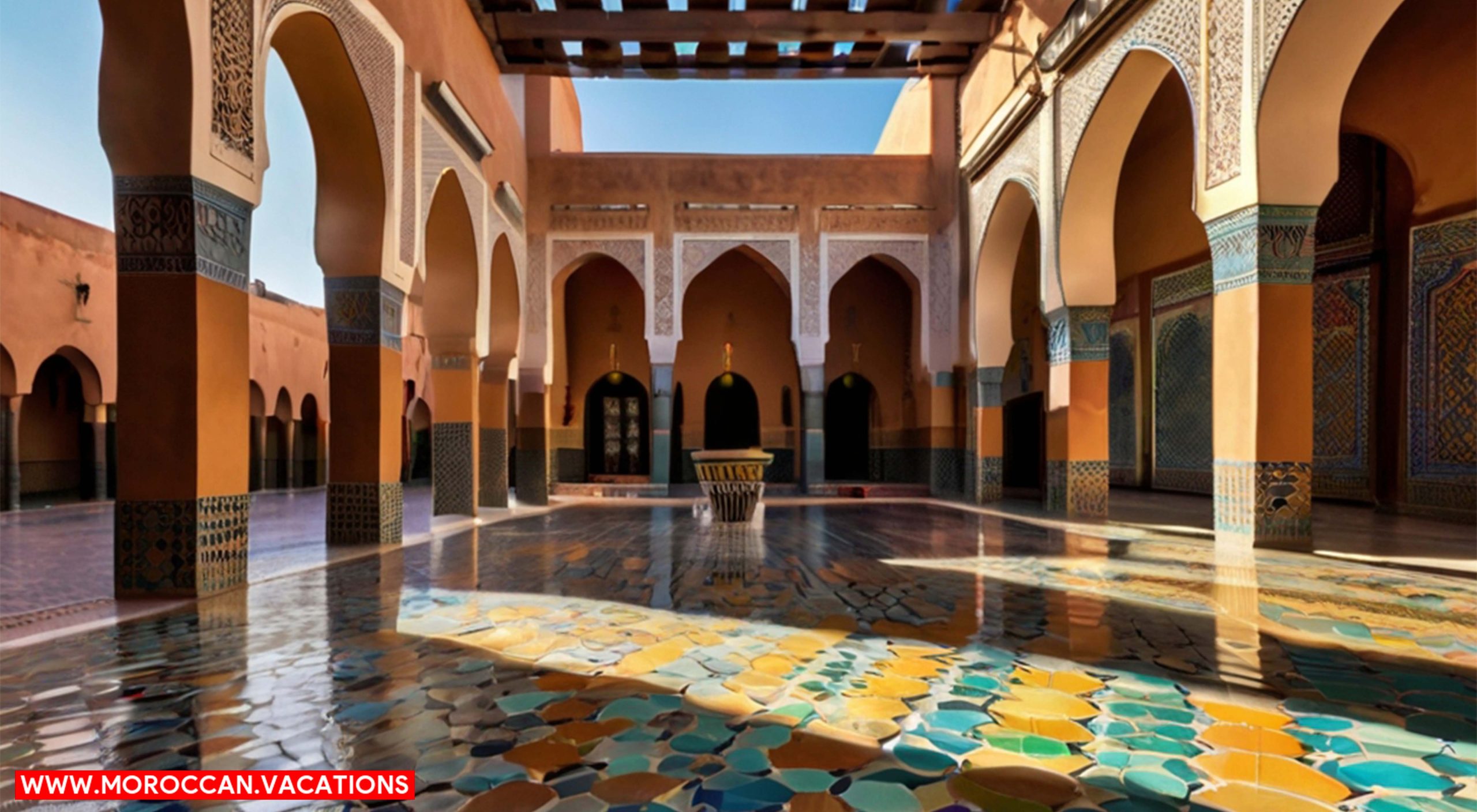

The enduring beauty of zellige tilework can be seen in its meticulously crafted patterns and vibrant colors, showcasing the rich cultural heritage of Morocco. The art of creating zellige tiles requires an exceptional level of skill and dedication, resulting in a product that withstands the test of time. The craftsmanship involved in producing these tiles is truly remarkable, as each piece is carefully hand-cut, shaped, and assembled to create intricate geometric designs. The attention to detail and precision exhibited in the process is a testament to the enduring craftsmanship of Moroccan artisans.
Beyond their aesthetic appeal, zellige tiles hold great cultural significance in Moroccan architecture. They have been used for centuries to adorn the walls, floors, and ceilings of mosques, palaces, and homes. These tiles not only serve as decorative elements but also reflect the cultural heritage and religious beliefs of the Moroccan people. The vibrant colors and geometric patterns found in zellige tilework are often symbolic, representing various aspects of Moroccan culture, such as nature, spirituality, and the harmony between different elements.
The enduring beauty of zellige tilework is a testament to the cultural richness and artistic excellence of Morocco. It is a living tradition that continues to be cherished and celebrated, not only in Morocco but around the world. The intricate patterns and vibrant colors of zellige tiles are a visual delight, captivating the senses and inspiring awe for the enduring craftsmanship and cultural significance they represent.


Samira Amrani
The passionate author behind Moroccan Vacations, sharing her expertise and love for Moroccan culture, cuisine, and travel experiences to inspire wanderlust in every reader.
Related Articles
A Tourist’s Guide To The Best Of Marrakesh: Top 15 Places To Visit
Discover the architectural marvel of Koutoubia Mosque – a symbol of Islamic heritage in Morocco. Learn about its rich history, intricate design, and significance as a landmark. Plan your visit and delve into centuries of cultural heritage.
15 Instagram-Worthy Spots In Meknes That Will Make Your Feed Pop
Explore the exquisite architecture and rich history of Bou Inania Medersa with our stunningly scaled images. Immerse yourself in the beauty of this iconic Moroccan landmark.
15 Hidden Gems Of Tangier, Morocco: You Won’t Believe Your Eyes
Discover the rich history and vibrant culture of North Africa at the Museum of the Kasbah in Tangier, Morocco. Immerse yourself in centuries-old artifacts and captivating exhibits, offering a glimpse into the region’s fascinating heritage.

